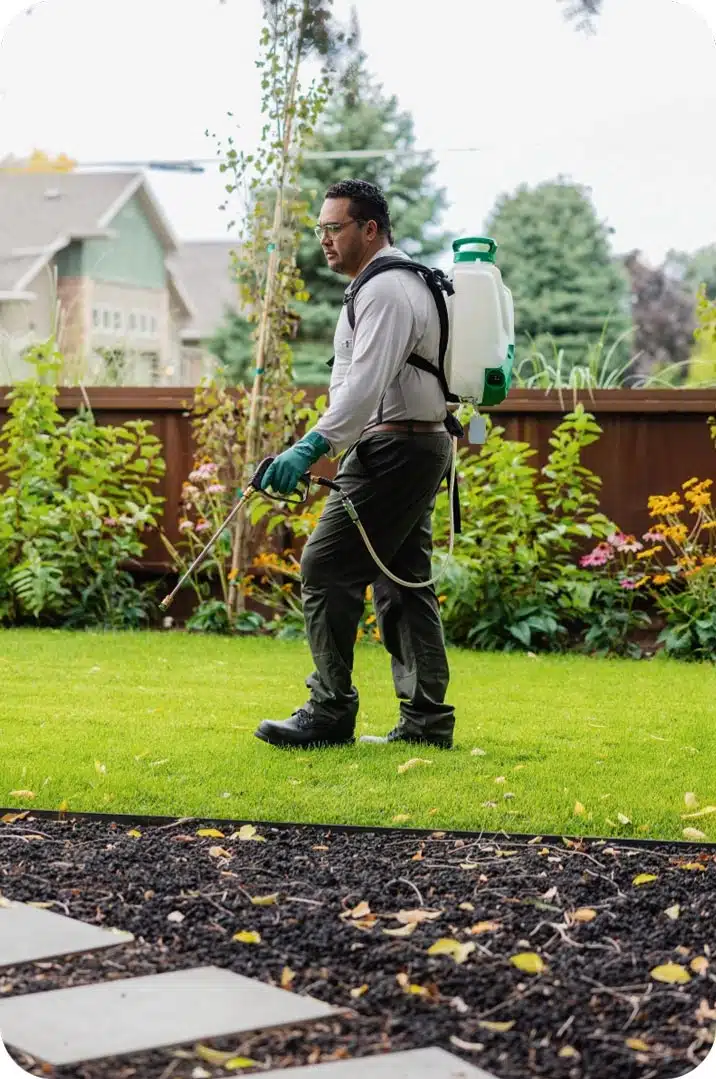Top Quality A1 Pest Control Services Charlotte - Shield Your Home
Wiki Article
Bed Bug Treatment Failure: Comparing Chemical Vs. Non-Chemical Solutions
In the realm of parasite control, especially when dealing with the consistent issue of bed insects, the option between chemical and non-chemical treatment services can be a critical one. Both techniques offer distinctive advantages and drawbacks, influencing aspects such as efficiency, safety factors to consider, and overall price. By analyzing the nuanced details of each method, a more clear understanding of which path to seek in resolving a bed pest invasion can be obtained.Performance of Chemical Treatments
Chemical therapies for bed bug infestations have actually been extensively acknowledged for their quick and potent efficiency in getting rid of these pests. When thinking about the performance of chemical therapies, it is crucial to recognize that they can supply a thorough and quick option to a bed bug issue.Furthermore, chemical treatments have the benefit of using residual effects, indicating that they can continue to get rid of bed bugs also after the initial application. This recurring activity is particularly helpful in combating any possible re-infestations. Additionally, the rapid action of chemical treatments can bring alleviation to individuals encountering extreme bed insect problems, allowing them to reclaim control of their home swiftly.
Security Concerns With Chemical Solutions
When making use of chemical options for bed bug treatment is making certain the safety of occupants and the environment,One crucial element that needs mindful consideration. While chemical therapies can be effective in eliminating bed insects, they may position dangers if not dealt with properly. One of the primary safety concerns with chemical solutions is the potential harm they can cause to human wellness. Exposure to certain chemicals used in bed bug therapies can bring about respiratory system problems, skin inflammation, or other unfavorable reactions, particularly in individuals with pre-existing conditions or level of sensitivities. Additionally, incorrect application or dosage of chemical pesticides can result in poisonous deposits sticking around in the cured area, positioning long-term health dangers to residents.Furthermore, the environmental impact of chemical remedies is one more considerable consideration. Some chemicals made use of in bed bug therapies may be harmful to advantageous bugs, wild animals, and environments if they seep into the soil or water systems. It is vital to use chemical treatments judiciously, complying with safety and security guidelines, and taking into consideration less poisonous choices to mitigate these threats and guarantee the secure and reliable administration of bed pest problems.
Benefits of Non-Chemical Techniques
Considering the possible safety and security worries and environmental impact linked with chemical remedies for bed insect treatment, discovering non-chemical approaches offers an encouraging choice with several distinctive advantages. Non-chemical treatments are environmentally friendly, as they do not add to air or water pollution, making them a lasting choice for bug control.Furthermore, non-chemical options can be reliable in targeting bed pests, including hard-to-reach areas where chemical treatments might not permeate. Methods such as heat therapy, vacuuming, steam cleansing, and bed mattress coverings supply complete obliteration without using harmful chemicals. In addition, non-chemical methods can be much less disruptive, requiring marginal preparation and permitting quicker reentry right into treated locations. Overall, opting for non-chemical bed pest therapy techniques not just prioritizes safety and ecological protection however additionally ensures reliable and comprehensive parasite control.
Limitations of Non-Chemical Treatments

Furthermore, non-chemical therapies typically call for multiple applications to accomplish effective removal. This can be taxing and may not always assure complete elimination of all bed pests and their eggs, particularly in covert or hard-to-reach places.
Furthermore, the success of non-chemical treatments greatly counts on appropriate implementation and thoroughness, which can be challenging for individuals without expert know-how. Inadequate application of non-chemical techniques might cause insufficient eradication, causing persistent invasions and the demand for additional treatments.
Consequently, while non-chemical treatments have their benefits, it is vital to recognize these constraints and consider them when figuring out the most efficient technique for handling bed pest invasions.
Cost Contrast: Chemical Vs. Non-Chemical Options
Offered the constraints connected with non-chemical therapies, an important facet to review in the context of bed bug management is the expense comparison between chemical and non-chemical alternatives. Chemical therapies typically involve the application of insecticides by experts, which can vary from $250 to $900 per space, depending on the intensity of the invasion and the size of the area to be treated. In contrast, non-chemical therapies like warmth therapy or heavy steam can be read the article a lot more costly, with costs ranging from $1,000 to $6,000 for a whole home. While the preliminary expense of chemical treatments might appear reduced, numerous therapies might be called for to totally eliminate the invasion, possibly boosting the total cost. On the various other hand, non-chemical options may give an extra environmentally friendly and lasting service, although they can be cost-prohibitive for some individuals. Inevitably, when taking into consideration the expense of bed bug therapy choices, it is very important to weigh the in advance costs versus the performance and long-lasting sustainability of the chosen approach.Final Thought

Thinking about the potential safety and security worries and environmental influence connected with chemical solutions for bed pest treatment, exploring non-chemical methods offers a promising alternative with numerous unique advantages.Given the restrictions connected with non-chemical therapies, a vital facet to evaluate in the context of bed insect administration is the price contrast in between chemical and non-chemical options. In contrast, non-chemical treatments like warm therapy or vapor can be more expensive, with costs ranging from $1,000 to $6,000 for an entire home. While the preliminary price of chemical therapies might appear reduced, multiple treatments might be called for to fully remove the problem, possibly boosting the general price.In conclusion, when comparing chemical and non-chemical bed bug therapy choices, it is vital to think about effectiveness, security, advantages, restrictions, and price.
Report this wiki page